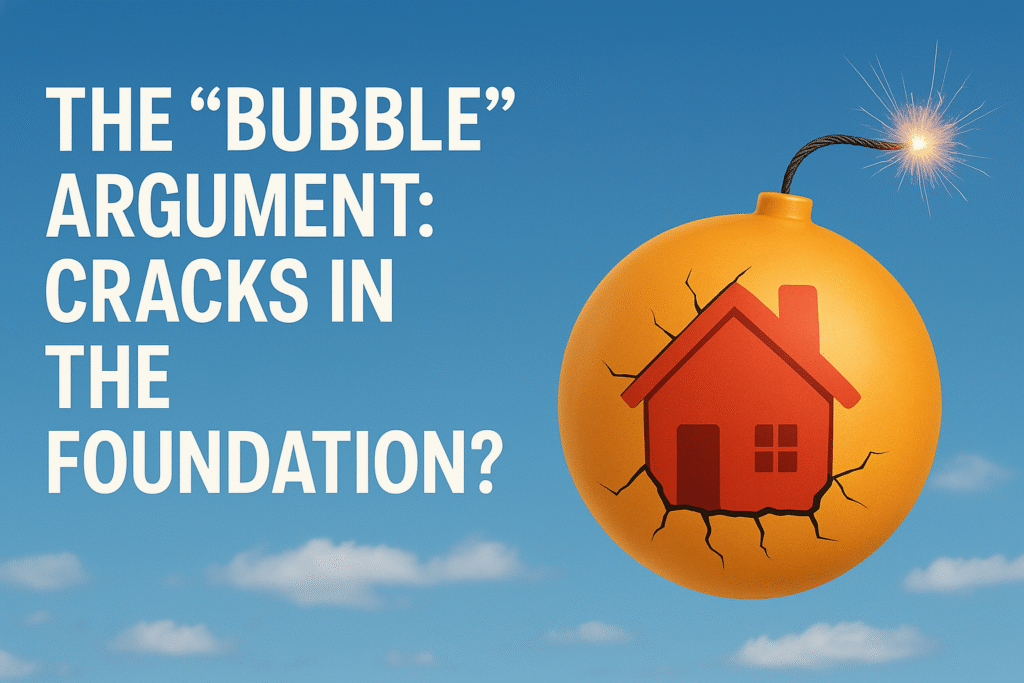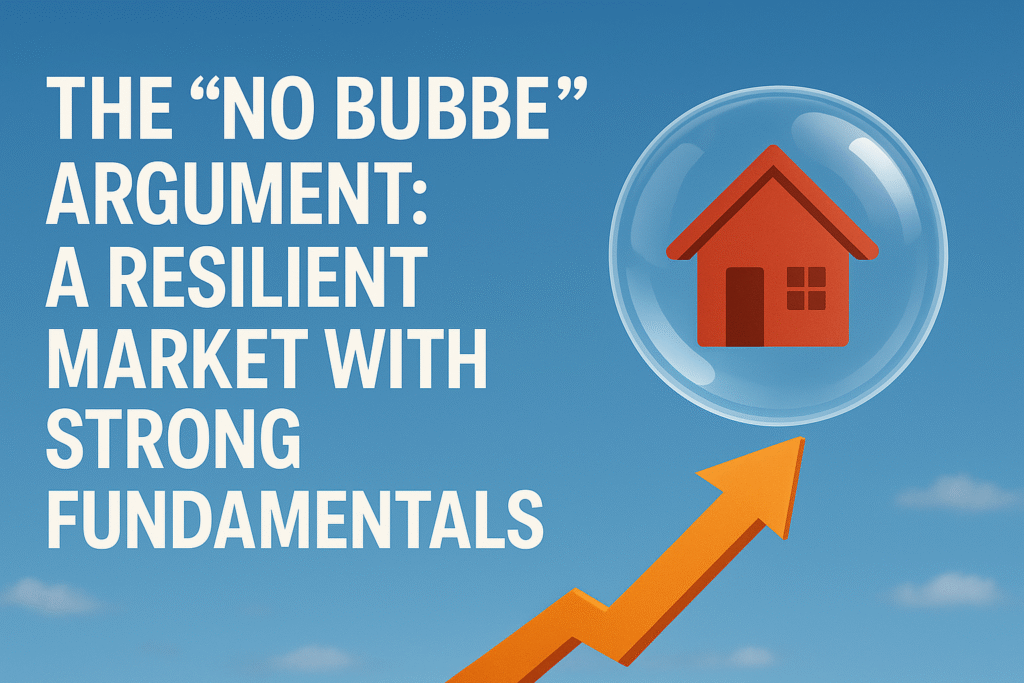Is the Indian Real Estate Bubble About to Burst in 2025?
The Indian real estate market has been on a seemingly unstoppable upward trajectory for years, with property prices in major cities often defying gravity. This sustained growth has led to a growing whisper, and for some, a loud concern: Is India’s real estate market in a bubble, and if so, is 2025 the year it finally bursts?
While the notion of a “bubble burst” conjures images of a dramatic crash, the reality of real estate corrections is often more nuanced. Let’s peel back the layers and examine the arguments for and against a significant market downturn in India in 2025.
The Indian real estate market “Bubble” Argument: Cracks in the Foundation?

Those who argue for a potential correction point to several indicators that, if unchecked, could lead to a slowdown or even a significant price rationalization:
1. Skyrocketing Prices vs. Stagnant Incomes: In many prime locations, property prices have far outpaced the growth in average household incomes. This widening affordability gap means that a significant portion of the population struggles to afford homeownership, leading to concerns about demand sustainability. While luxury housing sales are booming, the broader market’s health depends on the middle and affordable segments.
2. Rising Unsold Inventory, Especially in Luxury: Despite robust sales figures in some segments, the overall unsold inventory in several major cities remains a concern. Developers, eager to capitalize on demand, have launched numerous projects, sometimes leading to an oversupply in specific micro-markets, particularly in the luxury segment. A rising inventory overhang, if sales don’t keep pace, can put downward pressure on prices.
3. Developer Debt and Financial Health: While RERA has brought in greater financial discipline, some developers continue to operate with high levels of debt. A combination of rising interest rates, slower sales, or difficulty in project funding could lead to distress in the developer community, potentially impacting project completion and market stability.
4. Interest Rate Trajectory: The Reserve Bank of India (RBI) has shown signs of easing its monetary policy, with some repo rate cuts already seen in early 2025 and more anticipated. While lower interest rates make home loans more affordable and generally stimulate demand, a sudden or significant hike in rates (driven by unforeseen economic factors) could increase EMI burdens, leading to defaults and a cooling effect on the market.
5. Speculative Buying: While less prevalent than in pre-RERA times, instances of speculative buying and short-term flipping, especially in emerging micro-markets, can create artificial demand and inflate prices. If the market sentiment shifts, these speculative investments are often the first to be offloaded, contributing to price volatility.
The “No Bubble” Argument: A Resilient Indian real estate market with Strong Fundamentals

Conversely, a strong contingent of experts argues that the Indian real estate market is fundamentally robust and resilient enough to withstand a major “burst.” Their arguments are rooted in several structural advantages:
1. Genuine End-User Demand: Unlike previous cycles that were largely driven by speculation, the current growth is underpinned by strong end-user demand. Rapid urbanization, a growing young population, nuclear families, and the aspiration for homeownership continue to fuel demand across various segments.
2. RERA’s Impact on Transparency and Discipline: The Real Estate Regulation and Development Act (RERA) has significantly improved market transparency, accountability, and consumer protection. This has instilled greater confidence among homebuyers and institutional investors, reducing the risks associated with fraudulent practices and delayed projects.
3. Infrastructure-Led Growth: The massive government and private sector investments in infrastructure – new highways, metro networks, airports, and smart city projects – are creating new growth corridors and improving connectivity. This planned development provides long-term support for property values and generates new demand centers.
4. Demographic Dividend and Economic Growth: India’s strong economic growth projections (GDP growth expected between 6.5-7.0% for FY2024-25) and its young, aspiring population provide a powerful demographic tailwind. As incomes rise and job creation continues, so does the capacity and desire for homeownership.
5. Stable Lending Environment: Indian banks and financial institutions generally maintain more conservative lending practices compared to some Western economies that experienced housing bubbles. Stringent due diligence and loan-to-value ratios help mitigate systemic risk.
6. Government Focus on Affordable Housing: Initiatives like the Pradhan Mantri Awas Yojana (PMAY) and other affordable housing schemes aim to address the housing deficit for lower and middle-income groups. While not a direct market mover for all segments, this focus provides a crucial demand base and stability to the overall housing sector.
7. Diversified Investment Base: While some domestic speculation exists, the market is also attracting significant institutional investment, including Foreign Direct Investment (FDI) and Real Estate Investment Trusts (REITs), which bring in long-term capital and professional management.
Conclusion: Indian real estate market Correction or Consolidation?
The likelihood of a dramatic “bubble burst” in the Indian real estate market by 2025 appears low. While certain micro-markets or specific segments (like ultra-luxury with high unsold inventory) might experience price plateaus or even minor corrections, a widespread, systemic crash akin to the 2008 global financial crisis seems unlikely.
What is more probable is a market consolidation and rationalization. This could mean:
- Slower Price Appreciation: Instead of rapid, unsustainable hikes, prices might see more moderate, sustainable growth in line with income levels and economic fundamentals.
- Correction in Overheated Pockets: Areas with excessive supply or speculative pricing could witness price adjustments.
- Increased Focus on Affordability: Developers might shift their focus more towards mid-income and affordable housing segments to cater to genuine demand.
- Flight to Quality: Buyers might become more discerning, prioritizing projects from reputable developers with strong track records and clear titles.
For potential homebuyers and investors, 2025 might present a more balanced market. It’s a time for informed decisions, thorough due diligence, and a focus on long-term value rather than short-term speculative gains. The Indian real estate story is one of sustained growth, albeit with periodic adjustments that are healthy for the market’s long-term stability.
Frequently Asked Questions (FAQ) about the Indian Real Estate Market in 2025
Most experts agree that while certain micro-markets might show signs of overheating or overvaluation, the broader Indian real estate market is not in a speculative bubble that’s poised for an immediate crash. The growth is primarily driven by strong end-user demand and economic fundamentals, unlike previous cycles driven largely by speculation.
Key indicators include:
Rapid and unsustainable price appreciation decoupled from income growth.
High levels of speculative buying (flipping properties for quick gains).
Loose lending standards and excessive debt among buyers and developers.
Significant oversupply of housing units, leading to high unsold inventory.
Very low rental yields compared to property prices, indicating inflated valuations.
Those predicting a correction often point to the affordability gap, rising unsold inventory in specific segments (especially luxury), and the potential impact of high-interest rates or developer debt. Those who foresee continued stability highlight India’s strong economic growth, demographic dividend, infrastructure development, RERA’s regulatory impact, and genuine end-user demand.
The RBI is expected to continue with a growth-supportive monetary policy, with potential for further repo rate cuts. Lower interest rates generally make home loans more affordable, stimulating buyer demand and supporting property prices. However, any unexpected sharp increase in rates due to global or domestic economic pressures could temper demand.
Government policies like RERA have brought transparency and accountability, protecting homebuyers and reducing speculative practices. Initiatives promoting affordable housing (like PMAY) ensure that a broader segment of the population can access homeownership, creating a stable demand base and preventing an over-reliance on high-end segments. Infrastructure spending also fuels sustainable growth.
Micro-markets with significant oversupply, particularly in the luxury segment where demand might be limited, could experience price plateaus or minor corrections. Areas where price appreciation has been disproportionately high compared to local income growth might also see some rationalization.
A high volume of unsold inventory indicates an imbalance between supply and demand. If developers continue to launch new projects without commensurate sales, it can lead to developers offering discounts or delaying projects, which can eventually put downward pressure on prices in affected areas.
Many experts suggest that 2025 could be a good time for genuine end-users to buy, especially with potential for stable interest rates and increased transparency. However, due diligence, researching specific micro-markets, understanding developer credibility, and focusing on long-term value are crucial. For speculative investors, the market might be less conducive to quick gains.
The current market is considered more mature and regulated compared to previous cycles (e.g., pre-2008). The implementation of RERA and stricter lending norms by banks have reduced the systemic risks associated with unchecked speculation and builder malpractices, contributing to greater stability.
Do thorough research: Understand local market dynamics, supply-demand, and future infrastructure plans.
Prioritize RERA-registered projects: This ensures transparency and buyer protection.
Assess affordability: Don’t overleverage. Ensure your EMIs are manageable.
Focus on end-user demand: Properties in areas with strong genuine demand tend to be more resilient.
Consult experts: Seek advice from reputable real estate consultants, lawyers, and financial advisors.
